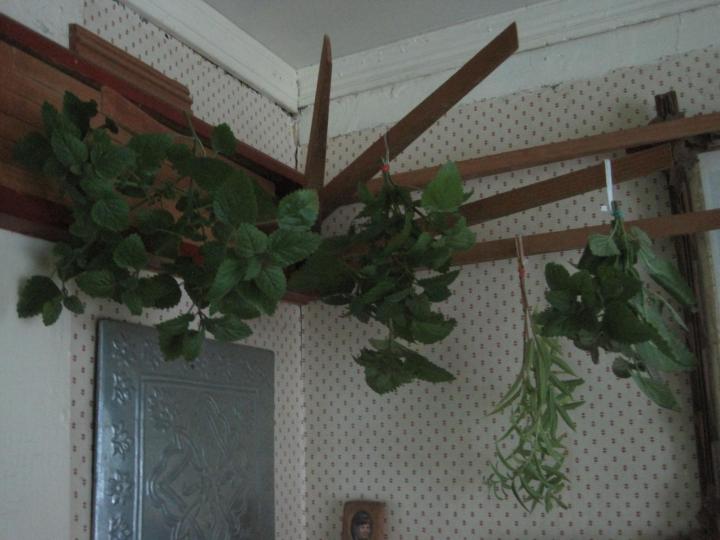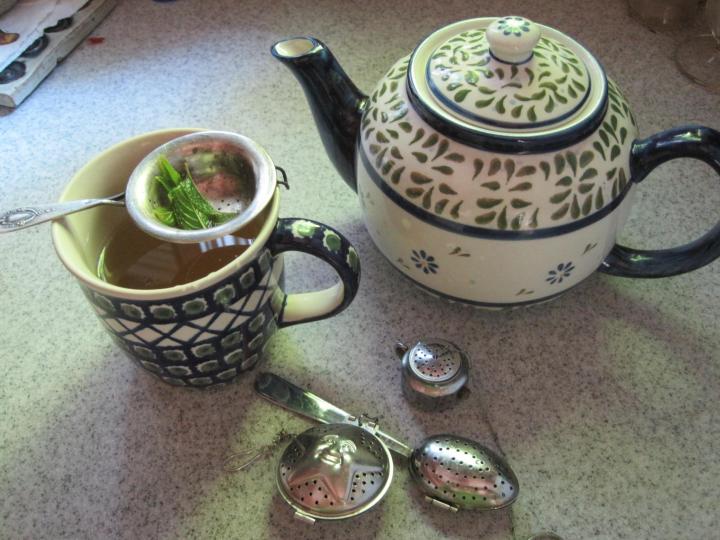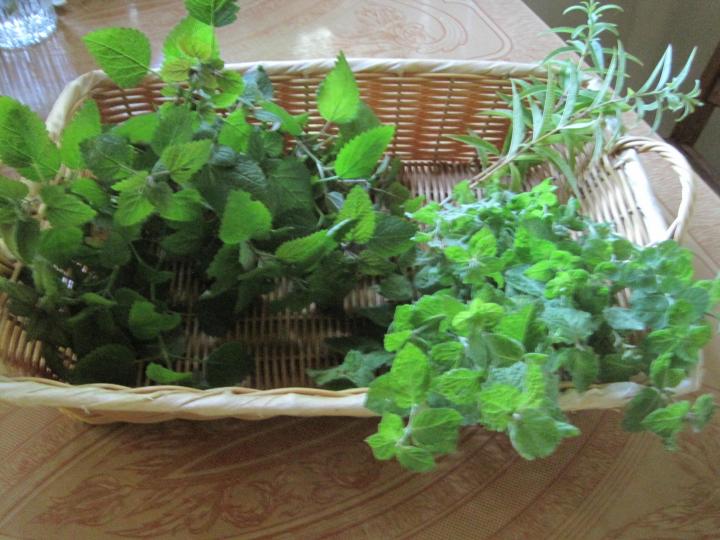Grab the bounty of fresh herbs while you can—and let's dry those leaves for tea. It's simple. See both how to dry your herbs and also how to make a good cup of herbal tea!
Advertisement
Grow Your Own Herbs for Tea
If you grew some of the plants mentioned in this Calming Herbs post, hopefully you have been enjoying them in iced and hot teas this summer. Even though fall is on the horizon, the party doesn't have to end!
Chamomile, lemon verbena, lemon balm, and any of the mints—peppermint, orange mint, and spearmint—are all ideal for tea.
 Image: Lemon balm ready to cut.
Image: Lemon balm ready to cut.
How to Dry Herbs
Before your plants are killed by frost, get a couple last harvests in and dry your remaining leaves to use over the winter.
Ideally, you should harvest before the plants flower for the best flavor—but this is last call!
- Harvest the leaves in the morning after the dew has dried. (When the growing season has ended, you can cut the plants right back to the ground if you wish.)
- Carefully brush off any dirt. Don’t wash the leaves off with water, as they may mold instead of drying.
- Proper drying will preserve the leaves and concentrate the flavors. Make small bunches and hang them upside down in a warm dry place out of direct sunlight.
 Image: Just a few of the last bunches harvested before frost.
Image: Just a few of the last bunches harvested before frost.
Or, you could spread the plants out on a clean screen (or paper towels laid over a wire rack) in a cool, dry spot. If you are having trouble drying in humid weather, you could resort to the oven, but that isn't optimal for tea.
→ Learn more about how to dry and freeze herbs.
 Image: Drying on a screen gives good airflow and can be faster than drying in bunches.
Image: Drying on a screen gives good airflow and can be faster than drying in bunches.
It can take up to a week or more for them to dry depending on the humidity in the air. Temperatures that are too hot—over 85 to 90°F—will cause volatile oils to evaporate. When the leaves are fully dried, strip them from the stems and store in an airtight glass jar kept in a dark, cool place.
Put the kettle on and brew up a cup!

How to Make Herbal Tea
Bring the water just to a boil, add anywhere from 1 teaspoon to 1 tablespoon of dried herbs per cup of water to your teapot, and then let steep for 3-5 minutes, depending on how strong you like your tea. Since herb teas are naturally light in color, test by taste rather than by sight. Keep in mind that overbrewed tea can be bitter.
You can use a teaball to keep leaves from clogging the teapot's spout or use an infuser to brew just a single cup. Many tea aficionados don't like to use the metal strainers, claiming they give the tea a metallic taste and don't allow the herbs to fully swell and release their flavors. I have a friend who uses her French press to make tea.
A dry summer helps to concentrate the flavors, making for some tasty teas. The chocolate mint was extremely strong and aromatic and the holy basil especially sweet and fruity this year. It grew so prolifically I couldn't keep up! The bees appreciated the blossoms though and the bubblegum aroma wafted over the garden on hot days.
 A combination of lemon balm, lemon verbena, and spearmint make a refreshing tea, served hot or cold.
A combination of lemon balm, lemon verbena, and spearmint make a refreshing tea, served hot or cold.
Tired of tea made from a single herb? Try these delicious combinations or experiment and make up some of your own. If you like your tea sweet, add a dried stevia leaf to each cup.
- Relaxing and Refreshing: 2 parts lemon balm to 1 part spearmint. This is my favorite combo.
- Citrus Spice: equal parts lemon basil, bee balm flowers, and orange mint.
- Luscious Licorice: equal parts anise hyssop, sweet cicely, and fennel leaves.
- Victorian Tea Garden: equal parts pineapple sage, chamomile flowers, and lemon balm.
- Mediterranean Blend: equal parts summer savory, marjoram, and rosemary. Better than bouillon!
- Calming Stress Reliever: 3 parts chamomile flowers, 2 parts lemon balm, and 1 part holy basil.
Enjoy a reminder of the garden this winter over a cup of homegrown herb tea.
Related Tea Content



 Image: Lemon balm ready to cut.
Image: Lemon balm ready to cut. Image: Just a few of the last bunches harvested before frost.
Image: Just a few of the last bunches harvested before frost. Image: Drying on a screen gives good airflow and can be faster than drying in bunches.
Image: Drying on a screen gives good airflow and can be faster than drying in bunches.
 A combination of lemon balm, lemon verbena, and spearmint make a refreshing tea, served hot or cold.
A combination of lemon balm, lemon verbena, and spearmint make a refreshing tea, served hot or cold.







Comments